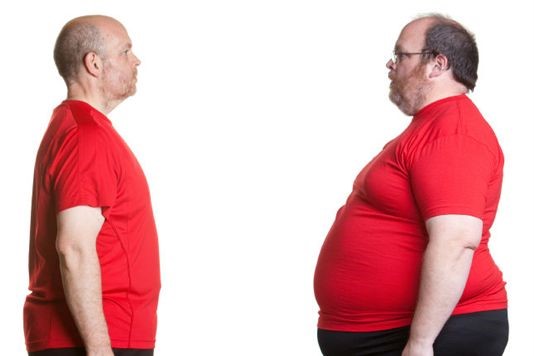
What do George Clooney, Dwain Chambers and Brad Pitt have in common? They're all overweight, according to the Body Mass Index (BMI). Here's why it's wrong.
Both the government and UK doctors advocate the Body Mass Index (BMI) as the primary tool to assess a person’s health. Head to the NHS website, and they’ll tell you that testing BMI is “a good way to check if you’re a healthy weight”. Naturally, we citizens are trained to trust the results. Even the World Health Organization uses it for measuring global obesity.
A very old equation

But who says so? Well, the 'Quetelet index' was devised between 1830 and 1850 by a Belgian astronomer/mathematician/all-round genius called Adolphe Quetelet (pictured). Since then, the fundamental equation hasn’t changed. The only addition to the concept came in 1972, in the Journal of Chronic Diseases by Ancel Keys, when it was officially named Body Mass Index, and was declared the best proxy for body fat percentage among ratios of weight and height.
What’s wrong with it?
It’s anachronistic, for a start. Quetelet’s equation only works if you believe, like he did, that in order to be ‘healthy’, an adult’s weight must be proportional to their height; but body shapes back in the 1800s were incomparable to ours today, so how can a principle decided so long ago have any relevance in 2012? Even Ancel Keys admitted in his 1970s journal that BMI was valuable for population studies, but “inappropriate for individual diagnosis”.
There is a wide range of factors that BMI doesn’t take into account: there’s no allowance for body type or bone density; it pays no attention to age; and it cannot assess your cardiovascular efficiency. But perhaps worst of all, BMI cannot differentiate between muscle and fat, which is why a six-packed Brad Pitt works out to be overweight.
Indeed, runnersworld.co.uk is very anti-BMI. In his brilliantly named Fat or Fiction article, sports journalist Michael Donlevy concludes that “while the BMI is a handy guide for nagging government ministers, it's oversimplistic and, frankly, out of date”.
He also quotes a scientific study from the Mayo Clinic in Rochester, USA, which questioned the accuracy of BMI back in 2009, when Michael published his article. Looking at data from 40 studies involving 250,000 people with heart disease, they found that overweight people had fewer heart problems than those with a normal BMI.
How about this instead?
We can’t have a rant without offering a solution. As far as athletes are concerned, body composition is better calculated using measures of body fat, as determined by techniques such as skinfold measurements or underwater weighing. Instead of BMI, the Body Volume Index (BVI), a new measurement devised in 2000 for human obesity, is often used in sports. It looks at where the body mass is located on a body, whereas BMI is based on a measurement of total mass, irrespective of the location of that mass.
Plus where BMI is based on height and weight only, the BVI system automatically measures BMI, waist circumference, and waist-hip ratio, as well as several other very complex things I don’t understand. You can make up your own mind about BVI by reading all about it here.
In conclusion
As of yet, the government has no plans to ditch BMI. To be fair, it is the cheapest, easiest way to measure someone’s health, especially on a large scale. There’s no need for tape measures, or underwater weighing – just type your height and weight into a handy online calculator, and you’ll get a result in seconds.
But there is a lot of evidence to suggest that we’re kidding ourselves with BMI, none more convincing than the apparent similarities between me and Mr Bolt. Maybe, as one commenter remarked at the end of the runnersworld.co.uk piece, the best way to measure one’s body fat is to “just jump up and down naked in front of a mirror – that will tell you if you’re a chubber or not!”
What do you think about BMI? And if you think it’s naff, what should we be using instead? Tell us in the Comments box below.
Usain Bolt photo courtesy of Arcimboldo
You might also like
The Paleo diet: My month of eating in the Stone Age
Interview with Jeannette Jackson, author of The Drop Zone diet